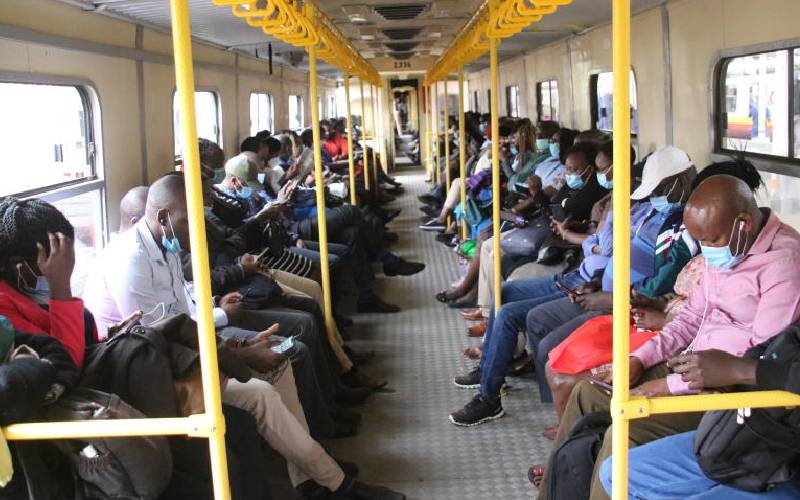×
The Standard e-Paper
Join Thousands of Readers

Passengers aboard in a city commuter train plying from Nairobi city to Athi River.[David Gichuru,Standard]
Lilian Mbithe, 35, works as a receptionist at a real estate firm based in Upper Hill, Nairobi.